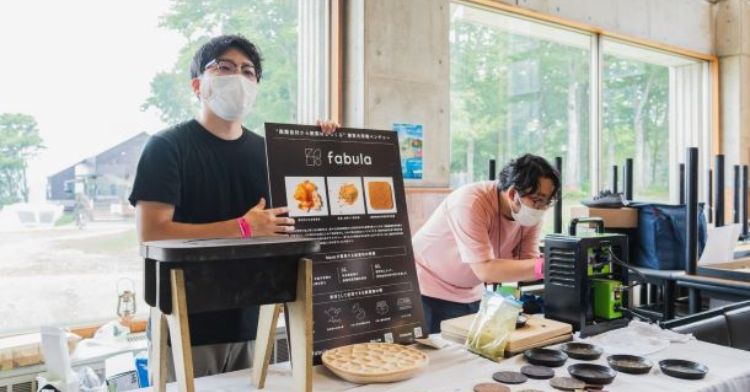Ever been hungry enough to eat a house? Well, thanks to the research of two scientists you actually could.
Tokyo University researchers Kota Machida and Yuya Sakai have developed a way to transform food waste into edible cement for construction use and more.
This is the first-ever process created for making cement entirely from food waste. The researchers say their product is four times as strong as traditional concrete. Wow!
This particular cement can be used for a variety of things beyond traditional building material. It can be used to make things like tea cups or chairs. However, there’s one additional feature – it’s also edible, aromatic, and biodegradable.
Kota and Yuya are the intelligence behind the formation of Fabula Inc., an initiative with a mission to reduce food waste, help curb global warming, reduce pressure on landfills, and offer a new way of looking at production with their cement made from everyday types of food waste.
As expected, something this unique took years to develop, but it can definitely make a global impact. Yuya, an associate professor of Industrial Science, formulated the unique technology while researching other possible sustainable materials that could replace cement-based concrete.
It took a few attempts to find just the right process. After a few failures, the Japanese researchers realized they could get the cement to bind by adjusting the temperature and pressure used.
“The most challenging part was that each type of food waste requires different temperatures and pressure levels,”Yuya said.
While other similar experiments using food waste in construction material have used food like coffee grounds or bio-waste ashes as filler in regular concrete, Fabula Inc. has tried different options.
Kota and Yuya shared with the Associated Press that they have successfully made cement using tea leaves, orange and onion peels, coffee grounds, Chinese cabbage, and even lunchbox leftovers.
They have even adjusted flavors with different spices and made sure the colors, scent, and taste of the cement are good. And if one needed to eat the food-based cement, all they would need to do is break it into pieces and boil it, Yuya said.
Cement has a variety of uses, and Fabula Inc. is currently working with firms to make tea cups and furniture, but Yuya is thinking a little bit bigger. Their product could provide relief in the form of edible emergency shelters in disaster zones.
“For example, if food cannot be delivered to evacuees, they could eat makeshift beds made out of food cement,” he said.
Food waste is a big problem in Japan and globally. According to the AP, Japan produced around 5.7 million tons of edible food waste in 2019. The government plans to reduce that by around 2.7 million tons by 2030.
Sounds like this invention is truly a step in the right direction. Even animals approve.
How do you dispose of it? Well, since it’s food, it can be reused and is biodegradable. You could literally bury it in your backyard when you’re done with it. Easy peasy.
“Our ultimate hope is that this cement replaces plastic and cement products, which have worse environmental impacts,” said Kota.
More than anything, this food-based cement really strives to make a positive environmental impact. And from the looks of it, it’s well on its way to achieving just that.
Share this story to wish these researchers well as they set out to change the ways we can rebuild our world.
Want to be happier in just 5 minutes a day? Sign up for Morning Smile and join over 455,000+ people who start each day with good news.



